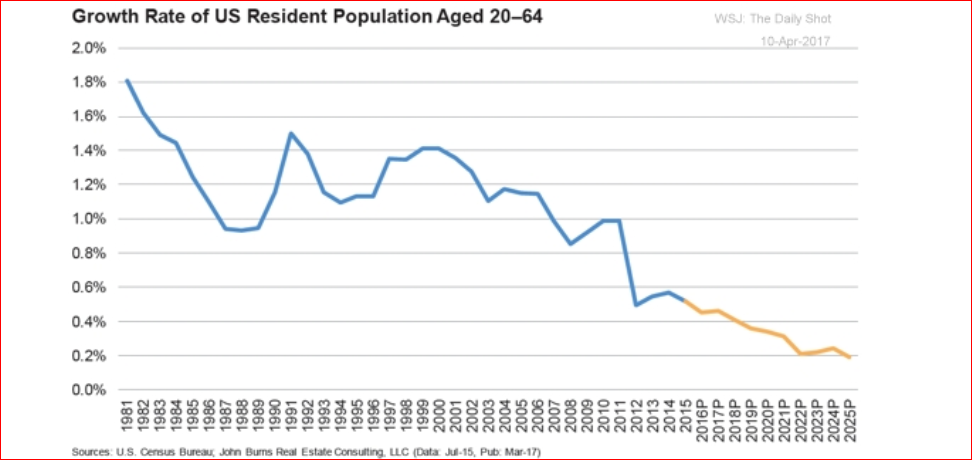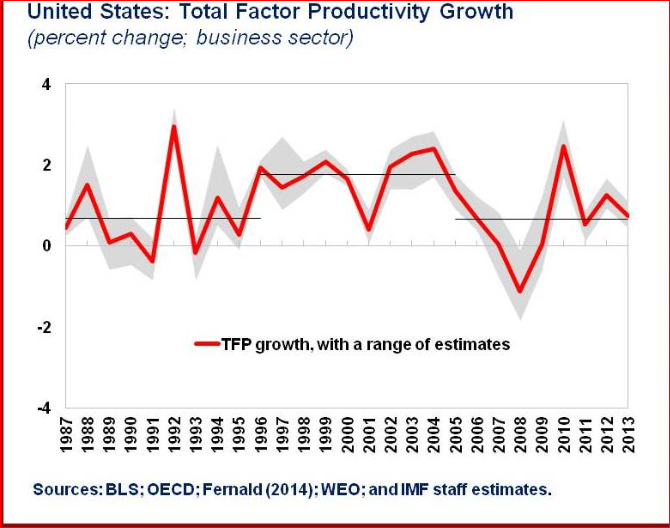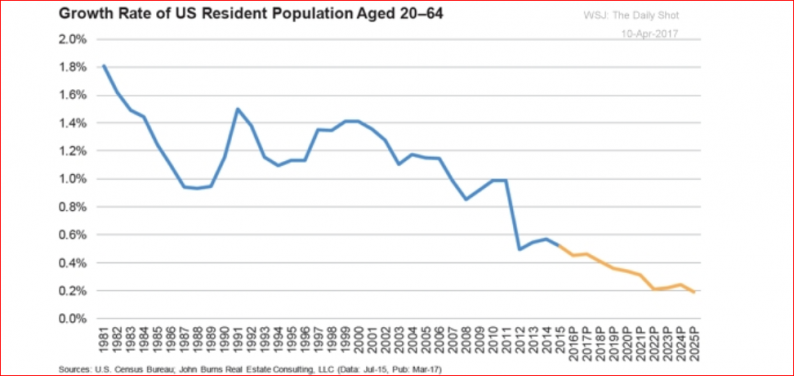Those who anticipate an acceleration in growth chose to ignore the overwhelming demographic forces that can slow an economy for many years, even decades. As a teacher of mine once said: “demography can explain just about 2/3ths of everything”. Economists tend to gloss over the power of demography when advocating how to speed up economic expansion. Today, we hear all about the need to de-regulate industry, to cut corporate and personal taxes, to reduce debt/income ratios, to promote innovation and, in some quarters, the need to narrow trade deficits through protectionism. Whatever one thinks of the merits of any or all these policies, we have to confront the major demographic forces that are dictating growth patterns.
A nation can only grow as fast as its labor force expands coupled with how efficiently its workers’ perform their jobs. The dramatic changes in the labor force growth are taking its toll on all developed countries. Chart 1 paints a clear and vivid picture of the decline in the growth of the working age population (age 20-64) in the United States. For much of the decade of 1990-2000 the labor force expanded at around 1.3 per cent annually. Combined with reasonable productivity improvements, (Chart 2) the economy had the capacity to register real growth rates of 3 per cent.
Chart 1

This capacity to grow at 3 per cent held up until 2005-6 when both the rate of growth of the labor force growth and that of productivity quickly changed gears. Moving from about 1 per cent growth in 2005, the population age 20-64 headed straight downhill and now is expanding at a paltry 0.2 per cent.
Chart 2

Over the same time period, productivity growth underwent a significant downward shift (Chart 2). Using the concept of “total factor” productivity which takes into account changes in capital investment per worker and other types of improved efficiencies, overall productivity is now averaging around 1 per cent.
The combined effect of a slowdown in the growth of the labor force plus a slowdown in total productivity is a recipe for downward shift in potential GDP. The best the United States can anticipate is growth of 2 per cent indefinitely. Once the demographic forces take hold, it takes a major policy shift regarding immigration to reverse these trends.













Leave A Comment